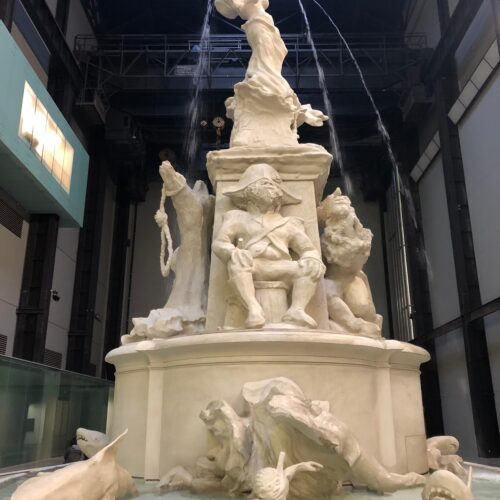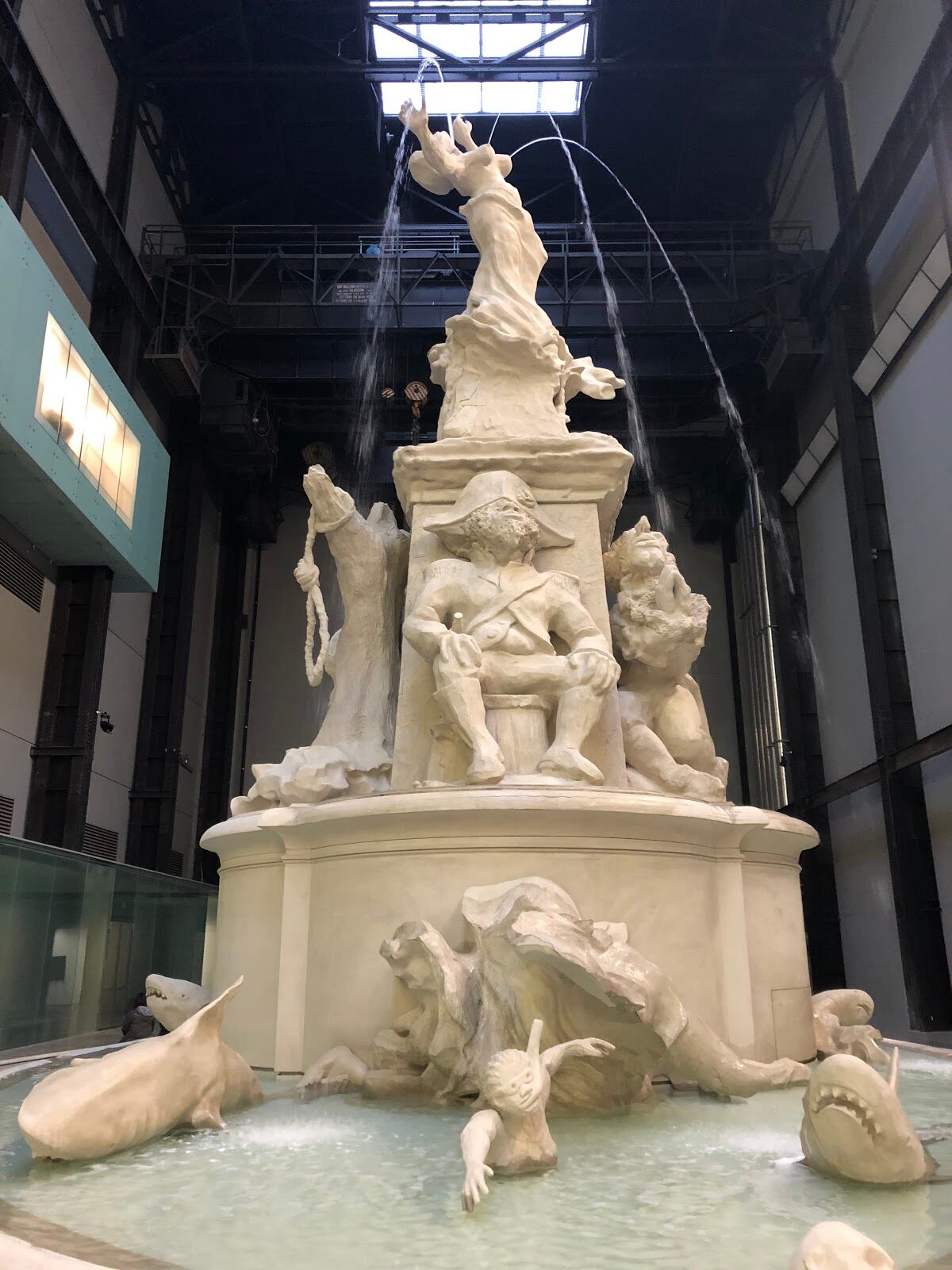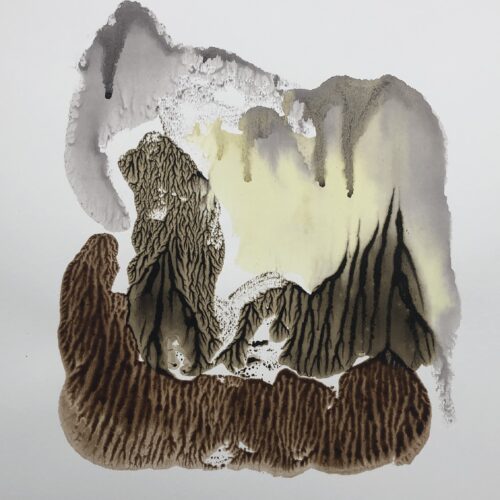
Black History Month 2020: Creative Arts in conversation
A conversation between OCA’s Doug Burton and Lara Eggleton
Doug – Hi Lara, I wanted to start our conversation around this monumental sculpture by Kara Walker, recently shown at the Tate Modern. I’ve been a fan of Walker’s wall-based cutout drawings for a long time, seeing ‘Fons Americanus’ felt like a release and didn’t disappoint in its powerful mockery of history and place. Walker’s sculpture reflects on the imperial history of the Victoria Memorial in front of Buckingham Palace. What did you think of Walker’s work, can artists successfully redefine ‘place’ in relation to art history?

Lara – I agree this is a really powerful piece, and I like the way Walker uses satire and the grotesque to comment on colonial history. Resituating her version of the monument in the Turbine Hall is also an effective way to make us question its meaning and unpack all the hierarchies and injustices that are an inherent part of so much civic sculpture. When we walk/drive past or perch on the edges of such moments, we rarely stop to recognise their complex historical weight and sinister symbolism (Walker herself says that the bigger they are the more easily they sink into the background). When encountered in an art institution like Tate and reimagined in this way, we have no choice but to engage with this darker side. Events of the past few years, such as Brexit and BLM have really started to change that – I think people are noticing public monuments and statuary a lot more.
Doug – You’ve been working on a piece of group work for creative arts students that unpacks our understanding of cultural bias and the impact of colonialism on our perspective of a Western orientated Art History. It feels to me that a re-orientation of Art History is needed, so we don’t lose it off our curriculums, and I don’t think contextual studies is a substitute. What do you think the importance of a de-colonised Art History is, can it help us to understand better our Western perspective, when looking at, for example, our historical monuments?
Lara – Yes, definitely. I can’t think of a more urgent time to come to terms with colonial histories. Brexit, populism, the rise of movements across the political spectrum, and now a global pandemic, have thrown racial, ethnic and economic divisions into sharp relief. It is crucial that we gain a deeper understanding of the visual languages that shape our public spaces, as well as the stereotypes and implicit biases that inform people’s actions and perspectives. What baggage do we all bring to the table, in some way or another?
Art History is a discipline with its roots firmly planted in Western European soil – this must be acknowledged in order to see how certain periods, geographic regions and art forms fall within or outside the scope of a particular ‘history of art’. De-colonising art history is a step toward this, to lay these foundations bare and to introduce a much wider range of art histories and craft histories that traditional teachings miss. OCA has a student body spread across the world – do you see this kind of curriculum planning as a natural step toward acknowledging this diversity?
Doug – I do, for me, it’s about shaping the curriculum towards a personal cultural perspective. So, we are not imposing a rigid doctrine of what Art History looks like or is defined by, we’re only going to engage a more global diverse range of student voices if we place students at the heart of the curriculum and give them the tools to shape historical contexts and debates.
For me, it comes from my mixed cultural heritage of both Persian and Corsican roots. I grew up learning about a History of Art that was something acutely Western, but I was also drawn to the ancient history of Persia and my family’s story within that. I suppose that’s what drives my interest here as I never felt I had room to explore this through the curriculum at school.
It’s been great chatting with you about this, do you have a final thought on what your hopes are for Diversity within Art History?
Lara – My hopes are high! I think there’s scope in any curriculum to expand thinking and world views. I similarly felt shortchanged in my learning growing up, and especially during my undergraduate degree, which is what led me to seek out and explore global art histories. The good news is that a lot of institutions are catching up and there is a growing interest in looking beyond traditional Euro-American narratives. OCA’s international cohort will be invaluable in identifying and shaping new directions in course work. I look forward to being part of it!
Image credit: Doug Burton, Kara Walker ‘Fons Americanus’ at the Tate Modern 2019
|
|






